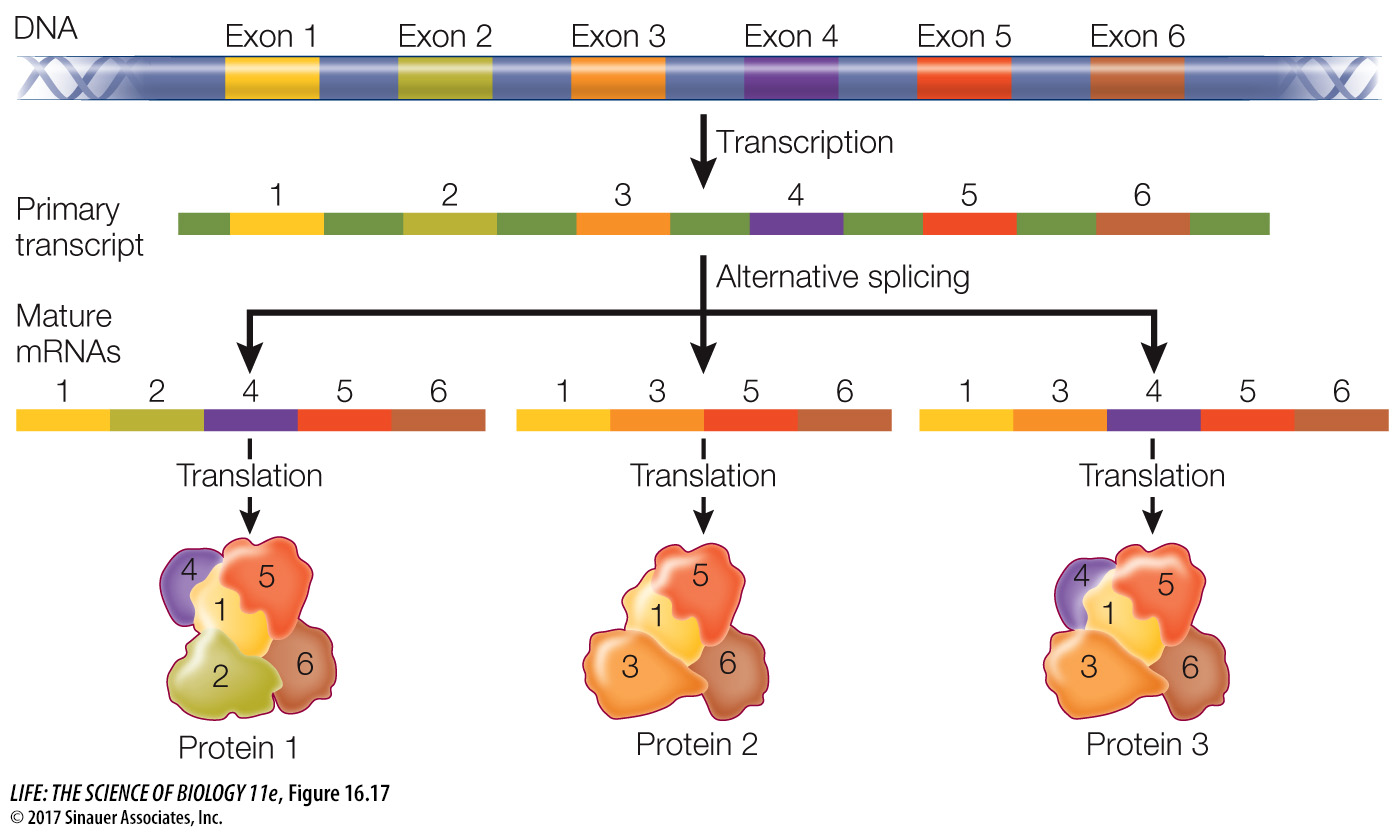RNA splicing can result in different mRNAs being made from the same gene
Most primary mRNA transcripts contain several introns (see Figure 14.7). Before the RNA is exported from the nucleus, a splicing mechanism recognizes the boundaries between exons and introns and converts pre-

For many genes, alternative splicing can occur, whereby some exons are spliced out along with the introns (Figure 16.17). This mechanism generates a family of different proteins, with different functions, from a single gene. Recent surveys show that about half of all human genes are alternatively spliced. Alternative splicing may be a key to the differences in levels of complexity among organisms. For example, although humans and chimpanzees have similar-

Q: A protein-
7.
Alternative RNA splicing is controlled both by regulatory elements in the RNA sequence that bind specific proteins (similar to regulatory sequences in DNA) and by secondary RNA structures that form by hybridization between nucleotides in the single-